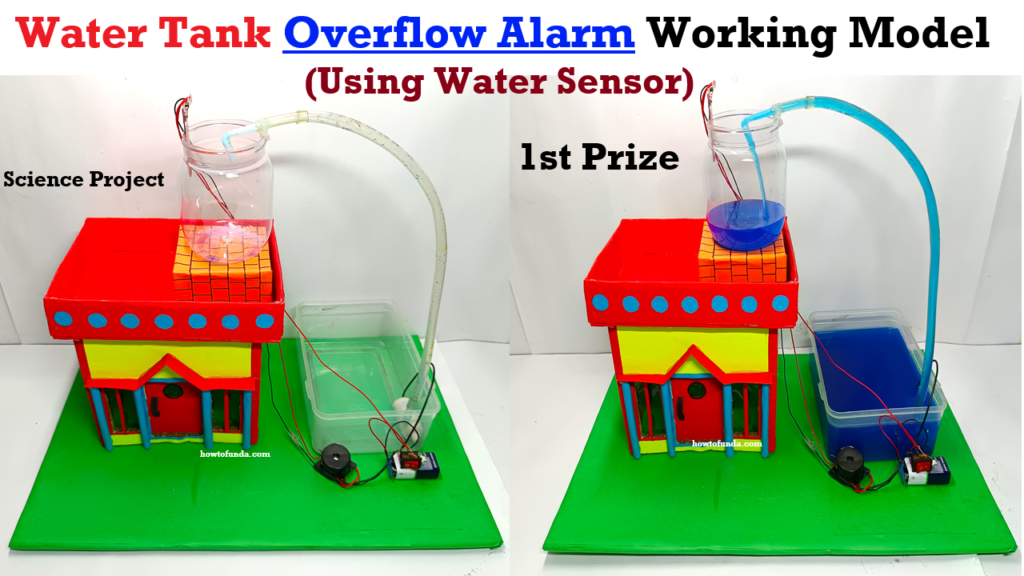Creating a water tank overflow alarm working model using a water sensor is a simple and effective project to demonstrate how technology can prevent water wastage.

The project will detect when the water in the tank reaches a certain level and trigger an alarm to notify that the tank is full.
Here’s a step-by-step guide to building this working model:
Materials Needed:
Electronics:
- Water Sensor Module (to detect water level)
- Buzzer (for the alarm)
- Battery or Power Supply (for Arduino and components)
- LED (optional, for a visual alarm)
- Resistors (if needed for the LED)
Non-Electronic Parts:
- Water Tank Model (you can use a plastic container to represent the tank)
- Water (to fill the tank)
- Cardboard or other materials (to create a base or support structure for the sensor)
Video Step-by-Step Guide to Build the Model:
1. Water Sensor Setup:
- Water Sensor Module: The water sensor detects the presence of water at a certain level. It has a sensor board (which goes into the tank) and a control board (which processes the signal).
- 2. Alarm System:
- Buzzer: The buzzer will sound when the water reaches the overflow level.
- Connect the Buzzer to the Arduino:
- The positive leg of the buzzer connects to one of the digital output pins (e.g., pin 8).
- The negative leg connects to GND.
3. Optional Visual Indicator (LED):
- You can also use an LED to indicate when the water level is full.
- Connect the LED’s positive leg to another digital output pin (e.g., pin 9) and the negative leg to GND via a resistor (220Ω).
4. Setting up the Water Tank:
- Use a plastic container to represent the water tank.
- Insert the water sensor near the top of the container, where you want to detect the overflow level.
- Make sure the sensor board is in a stable position so it can properly detect when water reaches the overflow level.
6. Test the System:
- Slowly fill the water tank (plastic container) with water.
- When the water reaches the sensor level, the buzzer should sound, and the LED should light up (if connected).
- Empty the water to reset the alarm and repeat the test to ensure it’s working properly.
Explanation and Working of the Model:
- Water Sensor:
- The water sensor detects when the water reaches a pre-defined level. When the water touches the sensor, it sends a signal to the Arduino.
- Alarm Activation:
- The Arduino reads the signal from the sensor. If the water reaches the sensor (indicating that the tank is full), the Arduino triggers the buzzer (and LED if used).
- Prevention of Overflow:
- The buzzer alerts the user to turn off the water pump or valve, preventing overflow.
Key Features:
Automatic Detection: The sensor automatically detects when the water level is too high.
- Audible Alarm: The buzzer sounds an alarm to notify the user when the water tank is full.
- Visual Alert: An optional LED provides a visual indicator of the water level.
- Real-World Application: This system can be implemented in real life to prevent water wastage and tank overflow.

